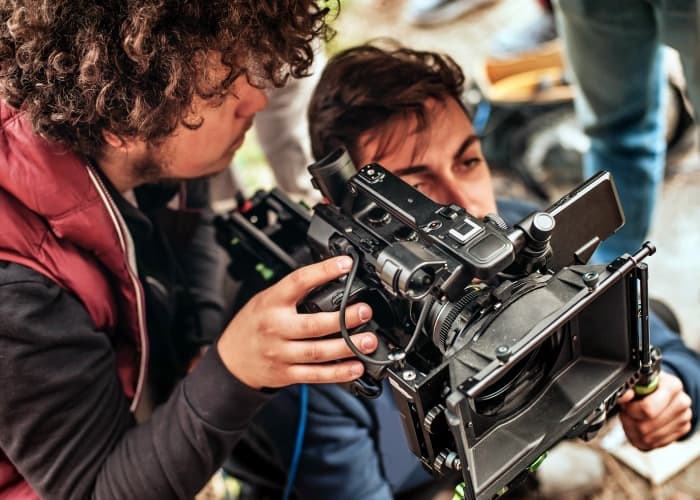
On every film set, there is a lone figure making sure the thing doesn’t fall apart at the seams. That person is the first assistant director (or first AD). In the Film Courage video “Life of a 1st AD,” assistant director Joe Bohn discusses some of the most important duties of the position, which mostly boils down to keeping shooting on schedule and on budget.
Contrary to what many assume given the word “director” in the name, the first AD position is not a job that exerts much creative force over the film. Instead, the first AD supports the director’s creative vision by keeping all the filmmaking cogs working properly so that the artist at the helm is able to achieve their overarching aesthetic and story goals. Essentially the job of the first AD is to keep everyone productive and solve problems that pop up. First ADs fall somewhere between a hall monitor and a project manager.
Some crucial tasks of a first AD include budgeting and enforcing time for set-up and tear-down of lighting and set configurations. They also call the roll, which is when the first AD literally calls out phrases to signal different departments, like how a conductor would signal different sections in an orchestra. This includes the phrases “roll sound” and “picture up,” which you can hear Bohn call near the beginning of the video. Sometimes the first AD is given the task of calling “action,” but many directors often prefer to do that themselves.
First ADs are also in charge of bringing actors to set in time for their scenes, working off what’s called a daily call sheet. This is usually a list of the shots the head honcho director wants to get done that day, and it specifies which actors are needed for which shot. This part of the job can be difficult to navigate because you’re dealing with various personality types and egos and trying to be efficient in the process. It’s tough to overstate how crucial this role is, though, because with most productions, no actor means no shot. If the first AD can’t enforce call times, the film could screech to a halt. On large-scale productions, the job of chasing around actors may be deputized to a second AD.
Whether the first AD has a second AD or not relates to the size of the production. On a big-budget production, the first AD will have a second AD, and the second AD may have a second-second AD. This divvies up tasks to make everything a lot more manageable. These ADs would also hypothetically delegate tasks to production assistants, so the chain of command can get even longer. Many hands may make light work, but the larger the scale, the more money is at stake, and the more organized a first AD has to be.
In the video, Bohn is working on a small-budget horror film shot exclusively in a house. As he notes, certain challenges are presented here, creatively (the shots could get too similar) but also practically (very little space to work). Another wrinkle is that they are getting shooting pages the day of, so he’s kind of building the call sheet on the fly. Bohn is clearly a great first AD; he’s firm with the actors and the timeline of production, and you get the sense watching him that he always has a million little scenarios running in his head figuring out the most efficient move at any given moment.
Because the job of a first AD is to keep everything on track, they seem to draw a relative lack of controversy. Unlike directors, actors, and producers, ADs aren’t really subject to the ebbs and flows of the weird politics of the industry. This means there are a few ADs in Hollywood that have racked up insane box office aggregates working consistently for massive projects. Jamie Christopher, for instance, has worked on everything from Star Wars to Harry Potter and the Marvel Cinematic Universe. Christopher’s box office total has reached over $14 billion. Fourteen billion dollars! $14,000,000,000. Is it sinking in?
While there are surprisingly few examples of first ADs becoming directors, after delving into the job a little more it makes sense. Both jobs certainly require a clarity of purpose and commanding vision, but the day-to-day work and skill set is vastly different. A director needs to have enough chaotic instinct to swing big when they have to and fight the studio for resources like time and money while a first AD is more concerned with whack-a-mole problem solving and enforcing timelines and bottom lines. Both are integral, and the push and pull between the two characterize much of the task of filmmaking in general. Creativity, time, and money make movies, and the first AD may just be the unsung hero of that equation.
Related Topics: directors, Filmmaking, Filmmaking Tips

